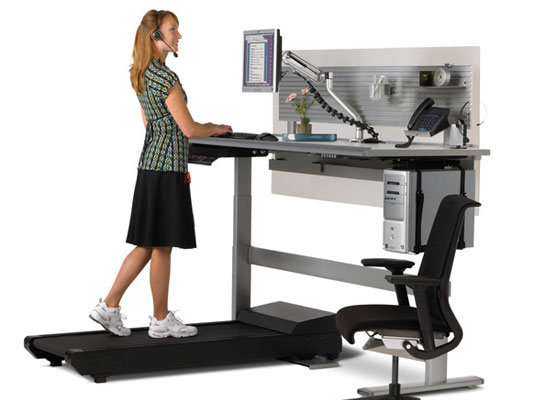5 Simple Tips For Desk Jockeys To Stay In Shape

Most adults are spending at least 40 hours a week on their workplace, and depending on how they work, there might be instances where they will be sitting in an awkward position for a prolonged period, eventually leading to work-related musculoskeletal disorders (WMSDs).
Based on a study conducted by the Bureau of Labour Statistics, it’s estimated that employers are losing a staggering $20billion per year on employee’s compensation claims for WMSDs, and 5 times of that amount to training and hiring of a replacement worker!
Apart from the financial loss, the chronic pain and injuries one has to suffer can be detrimental to everyday living, causing unnecessary pain and negatively affect the individual’s quality of life. Luckily, most of the problems are preventable, and we will explain how in this article.
1. Perform Exercise In A Standing Position
You spend a third of your day sitting on a chair, so the time spent in the gym is the best time to give your back a break. Even though there will be several exercises where you need to perform in a seated position, you should consider spending most of the time standing on your feet.
Used to include seated dumbbell curls and dumbbell press in your workout routine? Ditch them and perform it from the standing position, and make sure you maintain a straight lower back while squeezing your glutes and tuck your pelvis in to prevent the majority of the load on your back.
2. Stretch That Hip
A tight hip flexor will not allow you to activate the gluteus medius, and this will put more pressure on the tensor fascia latae, iliotibial band and quadratus lumborum. This can be observed by a tendency to lift the hip while moving side-to-side, twisting the spine to cheat with movements when the hip abductors should be the one that’s being worked on, and the tendency to lean forward while performing bend and lift motion. Apart from that, it may also inhibit the activation of the abdominal muscles.
3. Work That Wrist
Effort to strengthen the wrist musculature can be done to reduce the risk of getting carpal tunnel syndrome. To do so, you can maintain a neutral position while gripping and lifting a dumbbell, or simply move the wrists in the opposite direction of the repetitive action.
Apart from that, consider altering the position of your office table when you get to work, as many office desks are often placed on a different level as our wrist to be remained in a neutral position without excessively twisting it. If it’s not possible to do so, try taking a break every half an hour to move the fingers and wrists around.
4 Focus More On Glute Exercises
A hydrated fascia allows your legs to move cohesively and effortlessly. Because of the fluid state of the connective tissue system, message can travel clearly and swiftly, which is important because it allows your body to spread the weight equally across your feet while altering your position so that you can adapt to different surface.
When your glutes are spent most of the time compressed, the tissue will lose its fluid state, and the collagen network in the tissue is damaged. A sponge that’s being pressed against for a long time will not be allowed to transfer or absorb any fluid, so all the fat cells are being trapped inside. This will further worsen the connective tissue and makes the network fragile, giving the fatty tissue a chance to sneak through the web.
5. Perform More Pulling Movements
Most weight lifters spend too much time on the money muscles (biceps, chest, etc.) while ignoring the antagonists. This causes the shoulder to round forward, and in return your body will utilize other muscles to compensate for the movement, putting your supraspinatus tendon in risk for impingement.
To fix this problem, integrate more pulling movements such as rows, deadlifts, and pull-ups to retract the scapula and put it back into its original position.

